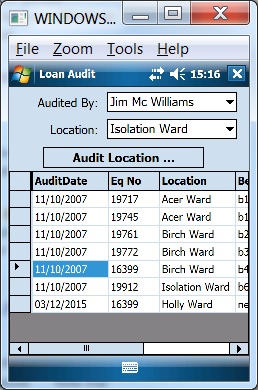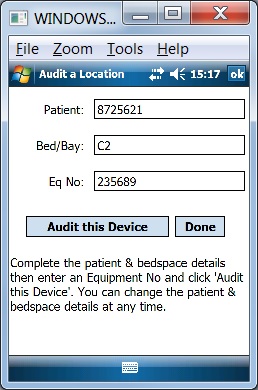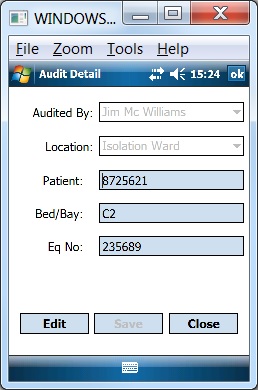If you’re involved with an equipment library then you’ll know that stuff moves. You might loan something to Fred in Ward 1 and it might pretty soon end up with Doris in Ward 2. The obvious (although very expensive) solution is to use RFID to track your library devices. For example, if you are fortunate enough to have the Harland Simon Discovery RFID system then as soon as the kit is detected in Ward 2 the loan for Ward 1 is closed and a new loan is created for the same device in Ward 2. How can you achieve the same thing without RFID?
Library staff commonly patrol the wards delivering equipment which has been requested and picking up items which are no longer required. There is, byt hye way, a handy Pocket PC tool for e-Quip called the Loan Manager which greatly simplifies this. In some hospitals, while the library staff are in a ward they go to each bed and record the library devices that they find there. When they get back to the library they update existing loans and create new ones depending on what they found. Clearly this involves a lot of work. The Loan Auditor aims to automate this process.
Step 1:
On entering a ward the librarian selects the location and (optionally) his name. He then clicks “Audit Location …”
Step 2:
He optionally enters a patient name/number and a bed/bay number, then scans the barcode of each device he finds. The process is simple and fast:
a. Scan the barcode
b. Click “Audit This Device”
c. Repeat for all devices
Step 3:
a. Go to the next bed
b. Optionally enter the patient & bed details
c. Scan each device, as in Step 2
Step 4:
When you leave the ward simply click on “Done”
If you make a mistake you can edit the audit record at any time by tapping on it.
Synchronisation
The “Sync Loans from Pocket PC” has been updated so that it can process audit records in addition to deliveries and collections.
This is what happens:
1. The device is not currently on loan
A new loan is created for the device using all of the information from the audit.
2. The device is currently on loan to the same location
The loan is updated with the patient & bed/bay information and the Audit Date & Audited By fields are updated
3. The device is currently on loan to a different location
a. The current loan is closed. The loan end date is set to be the Audit Date
b. A new loan is created for the device using all of the information from the audit.
All pretty straightforward, but this could save an enormous amount of time, improve your device utilisation data and also keep you equipment location information more up-to-date.



